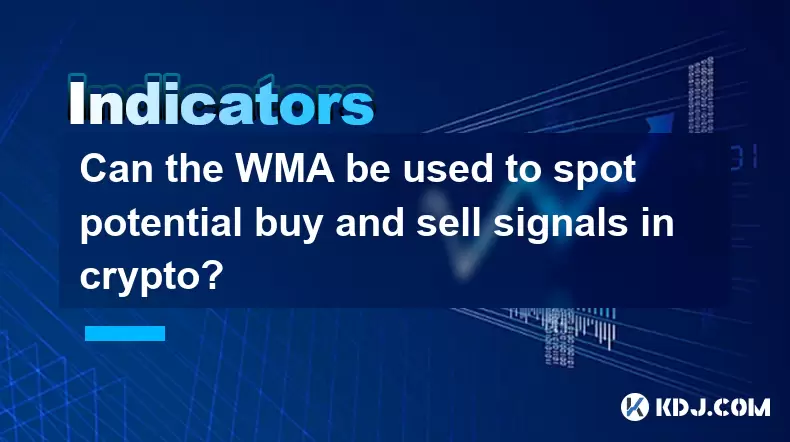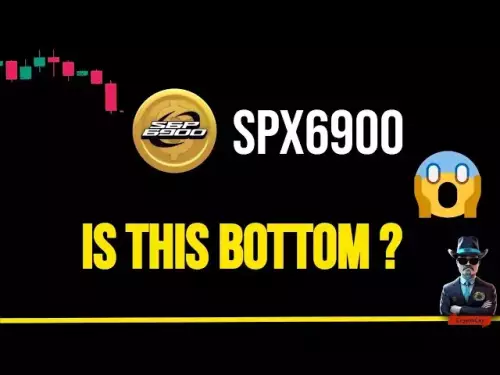-
 Bitcoin
Bitcoin $113100
-1.74% -
 Ethereum
Ethereum $4800
1.16% -
 XRP
XRP $3.041
0.36% -
 Tether USDt
Tether USDt $0.9999
0.02% -
 BNB
BNB $876.6
-0.40% -
 Solana
Solana $205.1
0.96% -
 USDC
USDC $0.0000
0.00% -
 Dogecoin
Dogecoin $0.2345
-0.10% -
 TRON
TRON $0.3629
0.40% -
 Cardano
Cardano $0.9260
1.91% -
 Chainlink
Chainlink $26.20
0.28% -
 Hyperliquid
Hyperliquid $46.04
2.89% -
 Sui
Sui $3.722
0.22% -
 Stellar
Stellar $0.4113
-0.53% -
 Ethena USDe
Ethena USDe $1.000
0.03% -
 Bitcoin Cash
Bitcoin Cash $590.3
0.39% -
 Avalanche
Avalanche $25.82
-0.01% -
 Hedera
Hedera $0.2504
-0.92% -
 Litecoin
Litecoin $119.1
-1.33% -
 UNUS SED LEO
UNUS SED LEO $9.598
0.03% -
 Toncoin
Toncoin $3.315
-1.69% -
 Shiba Inu
Shiba Inu $0.00001308
-1.02% -
 Uniswap
Uniswap $11.06
-2.10% -
 Polkadot
Polkadot $4.149
-1.10% -
 Dai
Dai $1.000
0.03% -
 Aave
Aave $350.7
-1.07% -
 Cronos
Cronos $0.1587
0.97% -
 Bitget Token
Bitget Token $4.664
-0.71% -
 Monero
Monero $274.5
3.42% -
 Ethena
Ethena $0.7021
-4.70%
Can the WMA be used to spot potential buy and sell signals in crypto?
The Weighted Moving Average (WMA) prioritizes recent prices, making it ideal for spotting momentum shifts in volatile crypto markets like Bitcoin and Ethereum.
Aug 10, 2025 at 10:07 pm

Understanding the Weighted Moving Average (WMA) in Cryptocurrency Trading
The Weighted Moving Average (WMA) is a technical indicator commonly used in financial markets, including the cryptocurrency space, to analyze price trends over time. Unlike the Simple Moving Average (SMA), which assigns equal weight to all data points, the WMA gives greater importance to recent prices, making it more responsive to new information. This responsiveness is particularly useful in the fast-moving crypto markets, where price shifts can occur rapidly due to news, macroeconomic factors, or market sentiment.
In the context of cryptocurrencies like Bitcoin or Ethereum, traders use the WMA to smooth out price data and identify underlying trends. Because crypto assets are known for their high volatility, a lagging indicator like the SMA may not react quickly enough to changing conditions. The WMA’s emphasis on recent data helps traders detect momentum shifts earlier, potentially leading to better-timed entries and exits.
How the WMA Is Calculated
The calculation of the WMA involves assigning weights to each price point in a given period, with the most recent price receiving the highest weight. For example, in a 5-day WMA, the most recent closing price is multiplied by 5, the previous day by 4, and so on down to 1. These weighted values are then summed and divided by the sum of the weights (in this case, 1+2+3+4+5 = 15).
- Multiply each closing price by its position in the sequence (latest = highest multiplier)
- Sum all the weighted prices
- Divide the total by the sum of the multipliers
This process ensures that recent price action has a stronger influence on the resulting average. In crypto trading platforms such as TradingView or Binance, this calculation is typically automated, but understanding the formula helps traders interpret the indicator’s behavior, especially during sharp price swings.
Using WMA Crossovers to Generate Buy and Sell Signals
One of the most common ways to use the WMA for spotting trading signals in crypto is through crossover strategies. Traders often plot two WMA lines on a price chart: a shorter-period WMA (e.g., 10-day) and a longer-period WMA (e.g., 50-day). When the shorter WMA crosses above the longer WMA, it may indicate a potential buy signal, suggesting upward momentum is building.
Conversely, when the shorter WMA crosses below the longer WMA, it could signal a bearish shift, prompting a sell or short entry. These crossovers are especially watched during consolidation breakouts or after major news events in the crypto space, such as regulatory announcements or exchange outages.
- Monitor the 10-day and 50-day WMA on a daily chart
- Wait for the 10-day WMA to cross above the 50-day WMA for a buy signal
- Confirm the crossover with rising volume on platforms like Coinbase or Kraken
- Use the opposite crossover for potential sell signals
It’s important to note that false signals can occur, particularly in sideways or choppy markets. Therefore, many traders combine WMA crossovers with other indicators like RSI or MACD to improve accuracy.
Combining WMA with Support and Resistance Levels
In addition to crossovers, the WMA can act as a dynamic support or resistance level in crypto charts. When the price is trending upward and remains above a rising WMA (e.g., 20-day), the WMA line may serve as dynamic support. Traders might look for buying opportunities when the price pulls back to touch or slightly dip below the WMA before bouncing back.
On the flip side, during a downtrend, the WMA can act as dynamic resistance. If the price repeatedly fails to close above the WMA, it reinforces the bearish outlook. For instance, during a Bitcoin correction in 2022, the 21-day WMA on the 4-hour chart consistently rejected price attempts to rally, offering multiple shorting opportunities.
- Identify a clear trend using higher timeframes (daily or 4-hour)
- Observe how price interacts with the WMA line
- Look for bounces off the WMA in an uptrend as potential long entries
- Watch for rejections at the WMA in a downtrend as potential short setups
This method works best when combined with volume analysis and candlestick patterns, such as bullish engulfing or bearish pin bars, near the WMA line.
Adjusting WMA Periods for Different Crypto Timeframes
The effectiveness of the WMA depends heavily on the chosen period and the trading timeframe. Day traders focusing on Bitcoin or altcoins might use a 9-period WMA on a 15-minute chart to capture intraday momentum. Swing traders, on the other hand, may prefer a 21-period WMA on a daily chart to filter out noise and focus on medium-term trends.
Shorter periods make the WMA more sensitive, increasing the number of signals but also the risk of whipsaws. Longer periods smooth the line but may delay entries. Experimenting with different combinations on historical data through backtesting tools available on platforms like MetaTrader or TradingView can help determine optimal settings.
- Test 9, 14, and 21-period WMAs on 1-hour BTC/USDT charts
- Compare signal frequency and accuracy across different cryptocurrencies
- Adjust based on volatility—use longer periods for stablecoins, shorter for high-beta altcoins
- Apply the same settings across multiple assets to assess consistency
Limitations and Risks of Using WMA in Crypto
While the WMA offers advantages over the SMA, it is not immune to limitations. Because it still relies on historical data, the WMA is inherently lagging. In extremely volatile crypto markets, such as during a flash crash or a sudden pump, the WMA may react too slowly to prevent losses. Additionally, during periods of low volume or sideways movement, the WMA can generate misleading signals.
Another risk is over-optimization—tweaking WMA periods to fit past data perfectly, which may not work in live trading. Traders should avoid curve-fitting and instead focus on robust, rule-based strategies. Using the WMA in isolation is not recommended; combining it with volume indicators, on-chain data (like exchange outflows), or order book depth can enhance decision-making.
Frequently Asked Questions
Can the WMA be used effectively on low-cap altcoins?
Yes, but with caution. Low-cap altcoins often exhibit erratic price movements and low liquidity, which can distort WMA signals. It’s advisable to use longer WMA periods and confirm signals with volume spikes or social sentiment indicators.
How does the WMA differ from the Exponential Moving Average (EMA)?
Both prioritize recent prices, but the EMA applies a smoothing factor that gives exponentially decreasing weights, while the WMA uses a linear weighting scheme. The EMA is generally more responsive than the WMA, though both are more sensitive than the SMA.
Is the WMA suitable for automated crypto trading bots?
Yes, the WMA can be programmed into trading algorithms. Many bots use WMA crossovers as entry and exit conditions. Ensure the bot includes filters like minimum volume or volatility thresholds to reduce false signals.
Should I use the closing price or typical price (high+low+close)/3 when calculating WMA for crypto?
Most traders use the closing price because it reflects the final consensus value for the period. The typical price can be used for a broader view, but it’s less common in standard WMA applications. Stick to closing prices for consistency with most charting platforms.
Disclaimer:info@kdj.com
The information provided is not trading advice. kdj.com does not assume any responsibility for any investments made based on the information provided in this article. Cryptocurrencies are highly volatile and it is highly recommended that you invest with caution after thorough research!
If you believe that the content used on this website infringes your copyright, please contact us immediately (info@kdj.com) and we will delete it promptly.
- Ripple's RLUSD and Japan's Regulation: A Match Made in Digital Finance Heaven
- 2025-08-25 07:05:29
- BlockDAG's $381M Presale: Meet the Core Team Driving Its Success
- 2025-08-25 07:25:14
- Solana Price Targets $270: On-Chain Strength Fuels Bullish Momentum
- 2025-08-25 07:25:14
- Ozak AI, Binance, and Coinbase: Navigating the Crypto Landscape in 2025
- 2025-08-25 05:05:13
- Coinbase, Hacker, and Solana: Decoding the $8M Heist
- 2025-08-25 05:30:12
- Riding the Altcoin Wave: Momentum, Tech, and Wall Street's Embrace
- 2025-08-25 06:05:21
Related knowledge

What does it mean when the +DI and -DI cross frequently in the DMI indicator but the ADX is flattening?
Aug 11,2025 at 03:15am
Understanding the DMI Indicator ComponentsThe Directional Movement Index (DMI) is a technical analysis tool composed of three lines: the +DI (Positive...

What does the sudden appearance of a "dark cloud cover" candlestick pattern during an uptrend indicate?
Aug 13,2025 at 11:35am
Understanding the 'Dark Cloud Cover' Candlestick PatternThe dark cloud cover is a bearish reversal pattern in technical analysis that typically appear...

What does it mean when the moving average, MACD, and RSI all send buy signals simultaneously?
Aug 11,2025 at 01:42pm
Understanding the Convergence of Technical IndicatorsWhen the moving average, MACD, and RSI all generate buy signals at the same time, traders interpr...

What does it mean when both the KDJ indicator and the RSI show overbought signals simultaneously?
Aug 13,2025 at 11:35am
Understanding the KDJ Indicator in Cryptocurrency TradingThe KDJ indicator is a momentum oscillator derived from the Stochastic Oscillator, widely use...

What does it mean when the price is trading above the SAR indicator but the red dots are densely packed?
Aug 09,2025 at 11:49pm
Understanding the SAR Indicator and Its Visual SignalsThe SAR (Parabolic Stop and Reverse) indicator is a technical analysis tool used primarily to de...

What does it mean when the candlestick chart forms a "Morning Star" but trading volume is sluggish?
Aug 12,2025 at 06:28pm
Understanding the Morning Star Candlestick PatternThe Morning Star is a three-candle bullish reversal pattern commonly observed in cryptocurrency pric...

What does it mean when the +DI and -DI cross frequently in the DMI indicator but the ADX is flattening?
Aug 11,2025 at 03:15am
Understanding the DMI Indicator ComponentsThe Directional Movement Index (DMI) is a technical analysis tool composed of three lines: the +DI (Positive...

What does the sudden appearance of a "dark cloud cover" candlestick pattern during an uptrend indicate?
Aug 13,2025 at 11:35am
Understanding the 'Dark Cloud Cover' Candlestick PatternThe dark cloud cover is a bearish reversal pattern in technical analysis that typically appear...

What does it mean when the moving average, MACD, and RSI all send buy signals simultaneously?
Aug 11,2025 at 01:42pm
Understanding the Convergence of Technical IndicatorsWhen the moving average, MACD, and RSI all generate buy signals at the same time, traders interpr...

What does it mean when both the KDJ indicator and the RSI show overbought signals simultaneously?
Aug 13,2025 at 11:35am
Understanding the KDJ Indicator in Cryptocurrency TradingThe KDJ indicator is a momentum oscillator derived from the Stochastic Oscillator, widely use...

What does it mean when the price is trading above the SAR indicator but the red dots are densely packed?
Aug 09,2025 at 11:49pm
Understanding the SAR Indicator and Its Visual SignalsThe SAR (Parabolic Stop and Reverse) indicator is a technical analysis tool used primarily to de...

What does it mean when the candlestick chart forms a "Morning Star" but trading volume is sluggish?
Aug 12,2025 at 06:28pm
Understanding the Morning Star Candlestick PatternThe Morning Star is a three-candle bullish reversal pattern commonly observed in cryptocurrency pric...
See all articles

























































































